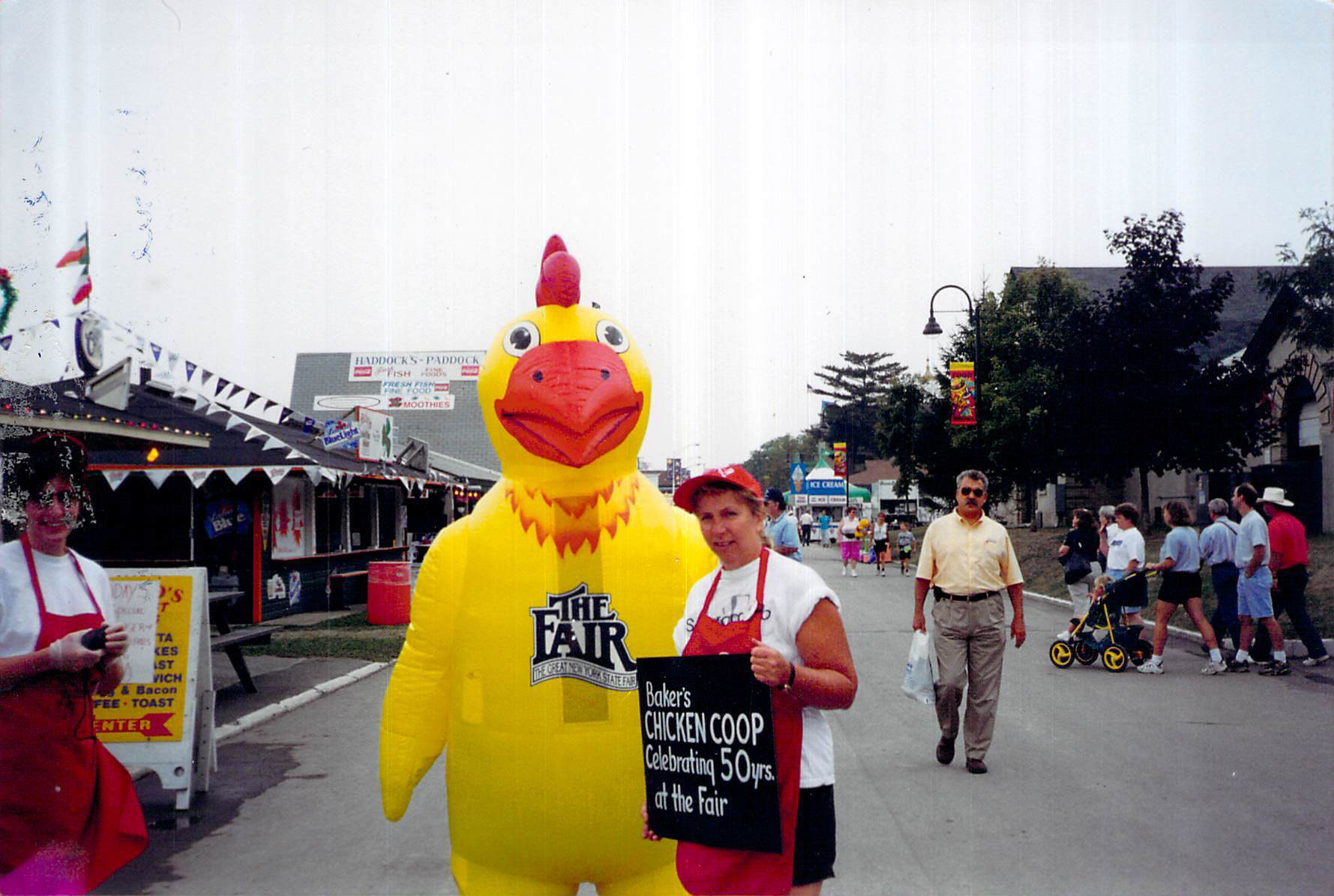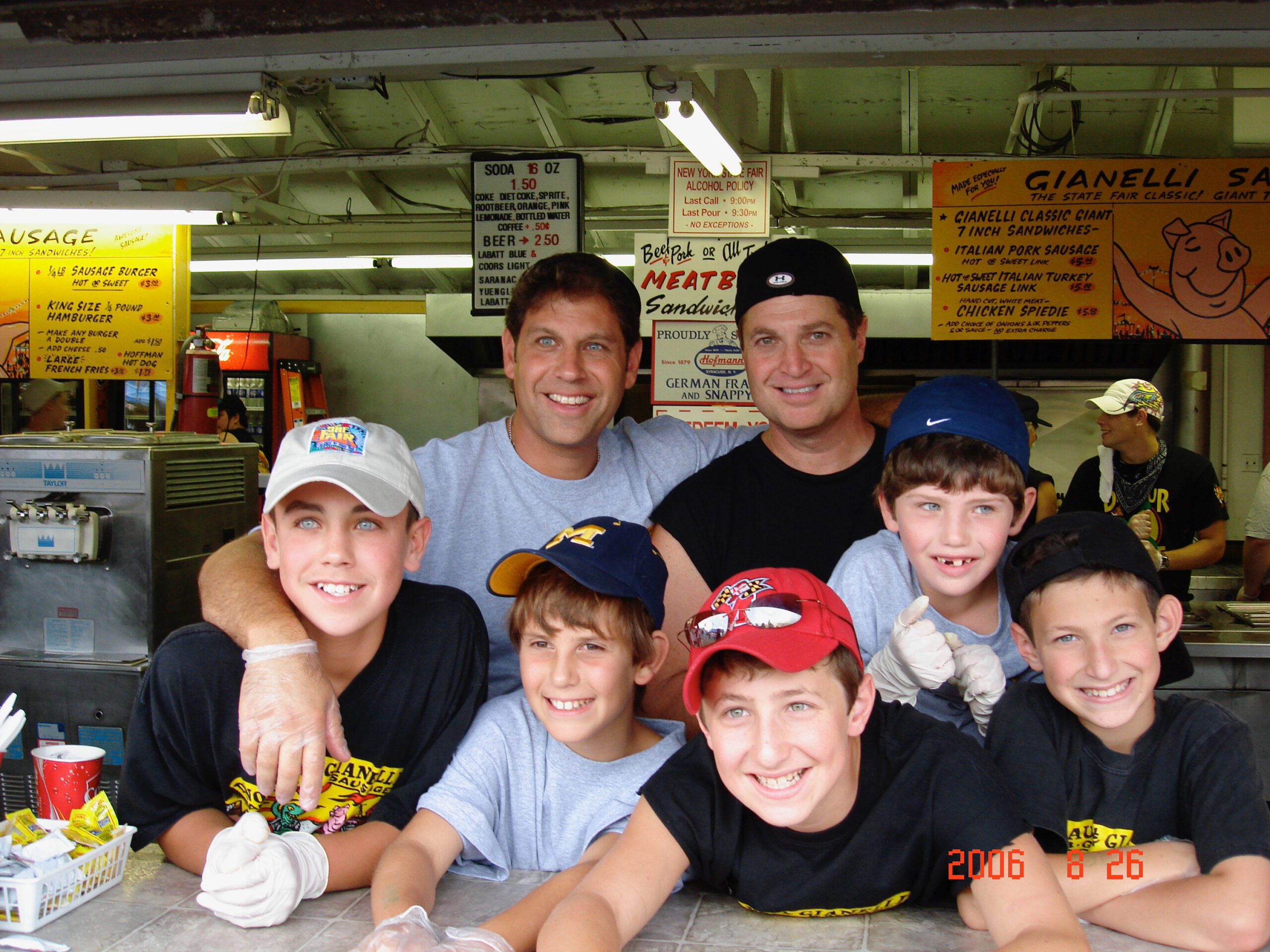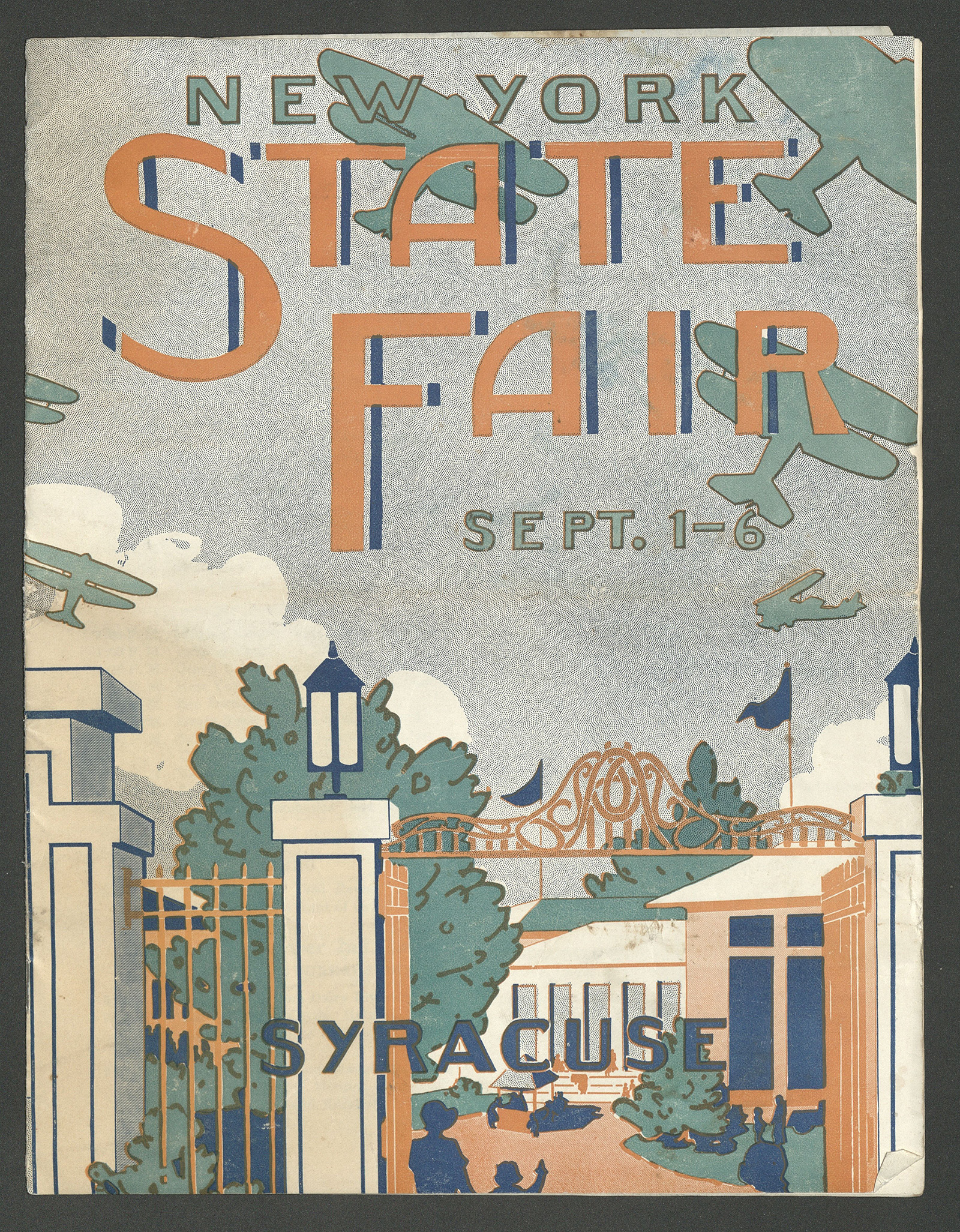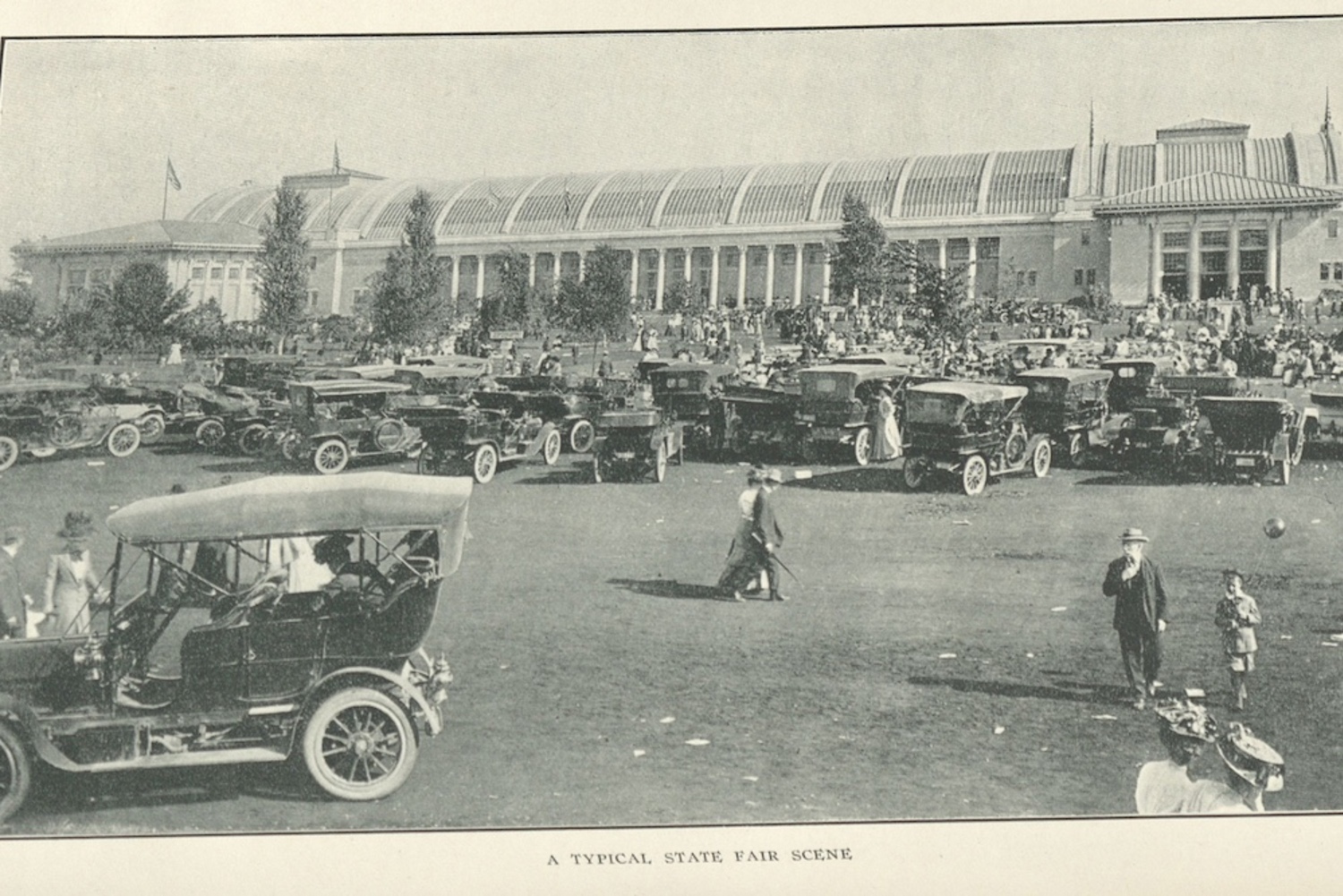N
icholas Pirro arrived at the Great New York State Fair for another day of work as the Fair’s graphics designer and website manager. Except this time, he and his colleagues disguised themselves as different animals in inflatable costumes.
“I met President Bill Clinton and First Lady Hillary Clinton at the Fair, but they probably wouldn’t realize it was me, because I was dressed up as a chicken,” Pirro said.
He said the moment he shook hands with the Clintons captures the essence of the thrill it is to work on the Fair year round.
Although the Fair’s mission was outlined almost 200 years ago, when the Erie Canal was the main form of transportation and Interstate 81 had not been built yet, food vendors and a taste for the state’s agriculture encourage people beyond Syracuse to return each year.
The Fair’s emphasis on agriculture has evolved throughout its journey, but the spotlight on fresh food and pride for New York is still prevalent these days for people like 82-year-old Susan Small, who attended the Fair in the mid-1950s as a child.
Small said she remembers how excited she’d be seeing the Kewpie Dolls dressed up for the Fair, the year’s butter sculpture and exploring the plethora of amusement rides and games present.
Once she became an adult, Small’s favorite parts of the Fair changed. When raising her own family in Syracuse and bringing them to the Fair, Small loved spending time in what was then the women’s building.
Small spent the majority of her life in Syracuse until moving to Florida last year, missing this year’s Fair. The original agricultural association has always attracted her to the Fair.
“My father enjoyed everything about agriculture and horticulture and the spirit of the Fair we went to every year,” Small said. “We always attended the animal contests and visited the cattle together, as a family.”
To this day, the Fair’s main entrance greets fairgoers with a building full of livestock animals and their farmers from all across New York state. But the founders of the Fair may not have expected the attraction to evolve into what it is now.
The Fair had its beginnings in 1840, when members of the New York State Agricultural Society, consisting of farmers and people with agricultural interests, gathered at the New York State Legislature and agreed to launch a fair for the next year to promote the state’s plentiful agriculture.
The Fair officially started on Sept. 29 and 30, 1841, attracting between 10,000 to 15,000 eager people who arrived in Syracuse for the nation’s first state fair.

Pirro works full time as graphics designer and website manager for the Great New York State Fair. In 1999, this job landed him patrolling the Fair in a chicken suit. Courtesy of the New York State Fair
What was then called the village of Syracuse was chosen to host the first state fair because of its accessibility through the Erie Canal.
Albany hosted the second year of the Fair, which was extended to three days. Now, the Fair lasts 13 days from the end of August until Labor Day, which accommodates farmers who have just finished their season and are preparing for the next.
Between 1841 and 1889, the Fair traveled back and forth among 11 different cities within the state — Albany, Auburn, Buffalo, Elmira, New York City, Poughkeepsie, Rochester, Saratoga Springs, Syracuse, Utica and Watertown.
Robert Searing, alumnus of the Maxwell School of Citizenship and Public Affairs and a curator of history at the Onondaga Historical Association, said the reasoning behind a traveling state fair was so each region could experience the economic benefits from hosting it.
“Agriculture is the dominant industry for most areas, so the Fair is a public relations event to show off the bounty that is New York state agriculture, which was made accessible by the canal,” Searing said.
Faced with infrastructure burdens and traveling demands, the Agricultural Society sought a permanent host city for the Fair to call home.
Everything changed in 1889 when the Agricultural Society received a donation of 100 acres in Onondaga County from the Syracuse Land Company. The donation was a crossroads between timing, economic evolution and the Market Revolution, Searing said. It made the Fair’s new home in Syracuse feasible.
Throughout the 1890s, the Agricultural Society constructed permanent buildings on the property, quickly falling into debt. As a result, Theodore Roosevelt, the governor of New York at the time, purchased the fairgrounds, managing the Fair for the first time in 1900. Roosevelt appointed 11 members to join the State Fair Commission to manage the Fair.
Since 1841, the Fair has been renamed several times, going from the New York State Agricultural and Industrial Exposition in 1938, to the New York State Exposition in 1962 and then returning to its original title as the New York State Fair. Eventually, Great was added to the title.

Gianelli Sausage operated a stand at the Fair for 41 years. Members of the family used to come together each year to help run the stand. Courtesy of Susan Rothstein
The Fair’s success means it’s only been paused on two occasions: a five-year hiatus from 1942 to 1947 for World War II — when the Syracuse fairgrounds became a military base — and in 2020 for the COVID-19.
During World War I and the Civil War, the fairgrounds were used as a makeshift training camp for doughboys preparing to fight in Europe. The Fair went on due to its popularity, but at limited capacity.
Now, the state’s support for the Fair is a way to stand out from other states and live up to the name of the “Empire State,” Searing said. That’s why the Fair has featured live performances by notable artists, like Frank Sinatra, Taylor Swift, GROUPLOVE, Black Eyed Peas, Lil Jon and others included in the ticket price, Pirro said.
Searing said the Syracuse local fairgoers aren’t the only ones who benefit from the Fair’s permanent home — the tourism the city receives from the Fair allows it to reap economic benefits.
Small business owners who sell their food to fairgoers and get their names out also receive these benefits, which is how the Gianelli Sausage stand managed to operate its food stand at a prime location on the fairgrounds for 41 years, Small said.

The length of the Fair has fluctuated over the years. It started as a two-day event in 1841, and has since expanded to two weeks. Courtesy of SCRC
The Syracuse-based sausage vendor operated its stand at the Fair until 2021, but its legacy continues today. Susan Rothstein’s father Louis Davis founded the company under G&L Davis Meat Company in 1946.
Rothstein began working at the stand when she was 13 years old. Her father died in 1990, but it didn’t stop her family from keeping up with the family business and continuing the legacy. The Fair led Rothstein to her career as a caterer. Her brother, Stephen Davis, took over the company as the CEO, which he still operates today.
“It’s funny how one thing leads to another in life; the Fair led to my life passion as a caterer. I’ve been a caterer for 15 years,” Rothstein said.
Before she married her husband, she insisted he visit the Gianelli Sausage stand at the Fair. He was a banker by career, but for those two weeks, he was a cashier, serving tables and taking care of the stand’s business numbers.
“Everyone at our stand worked year after year. It was a community and a family; people loved working there,” Rothstein said.
As the years go by, the memories of the Fair fade a little bit for Pirro. He doesn’t remember everything, but for Small, the iconic staples of the Fair and warm memories have stayed with her, even after moving from Syracuse.
“I don’t really remember any of the specific concerts I went to as a kid, but I do remember sitting on the ground in a plastic chair during loud concerts, just smiling with my family,” Small said.
Published on August 28, 2025 at 2:46 am



